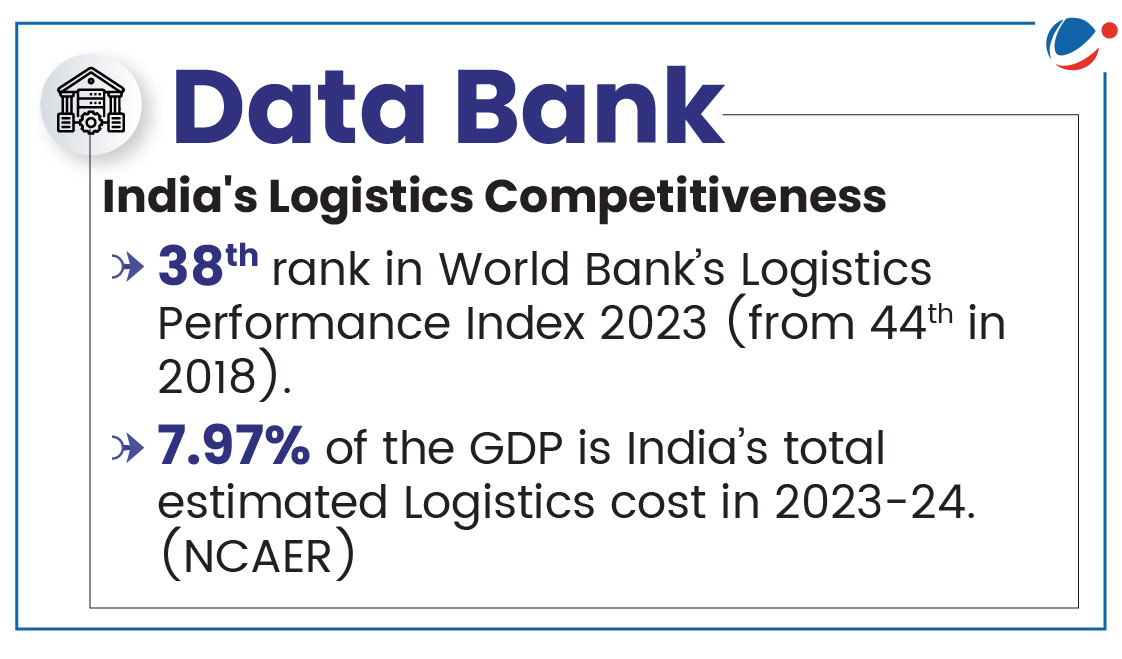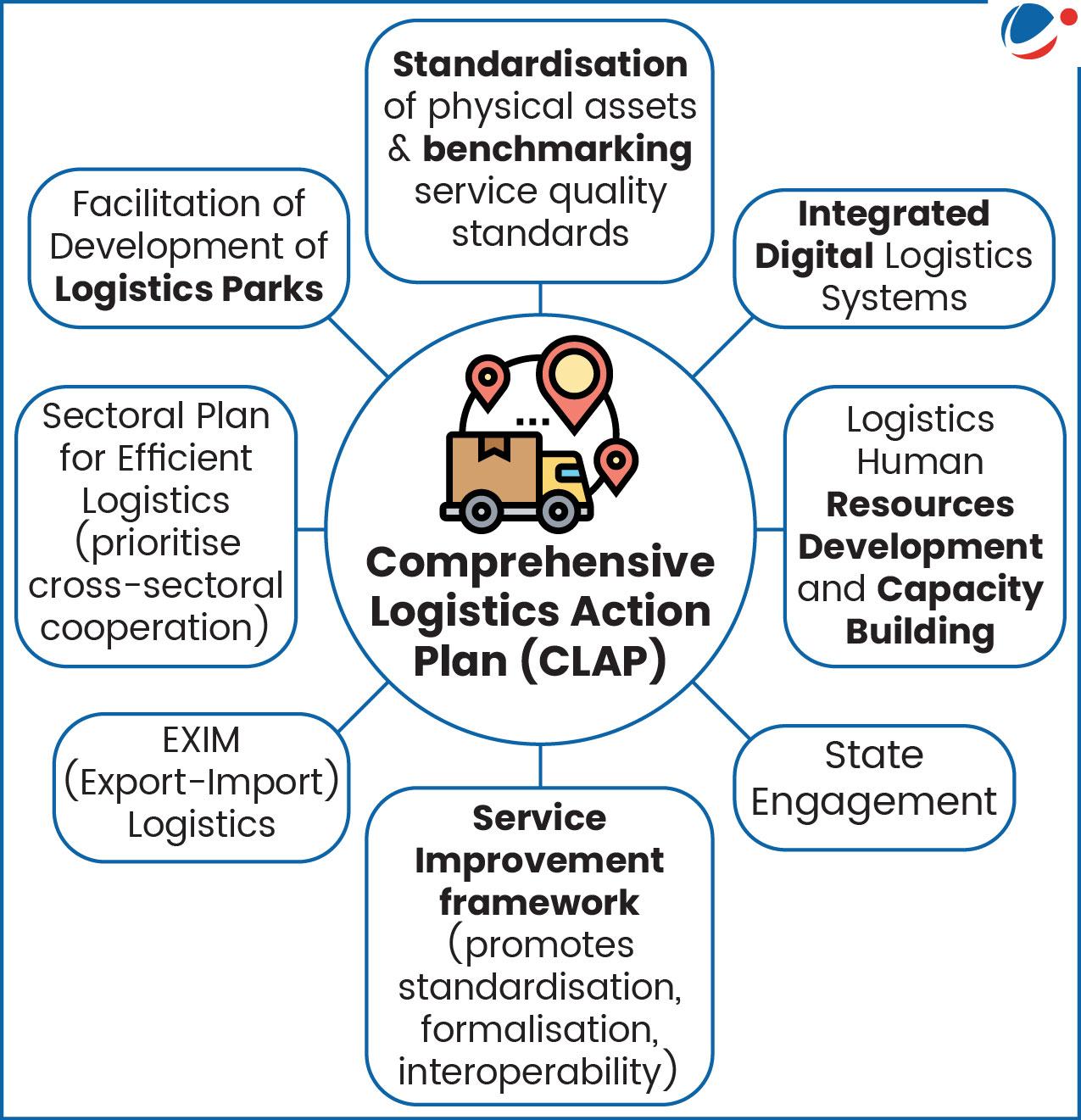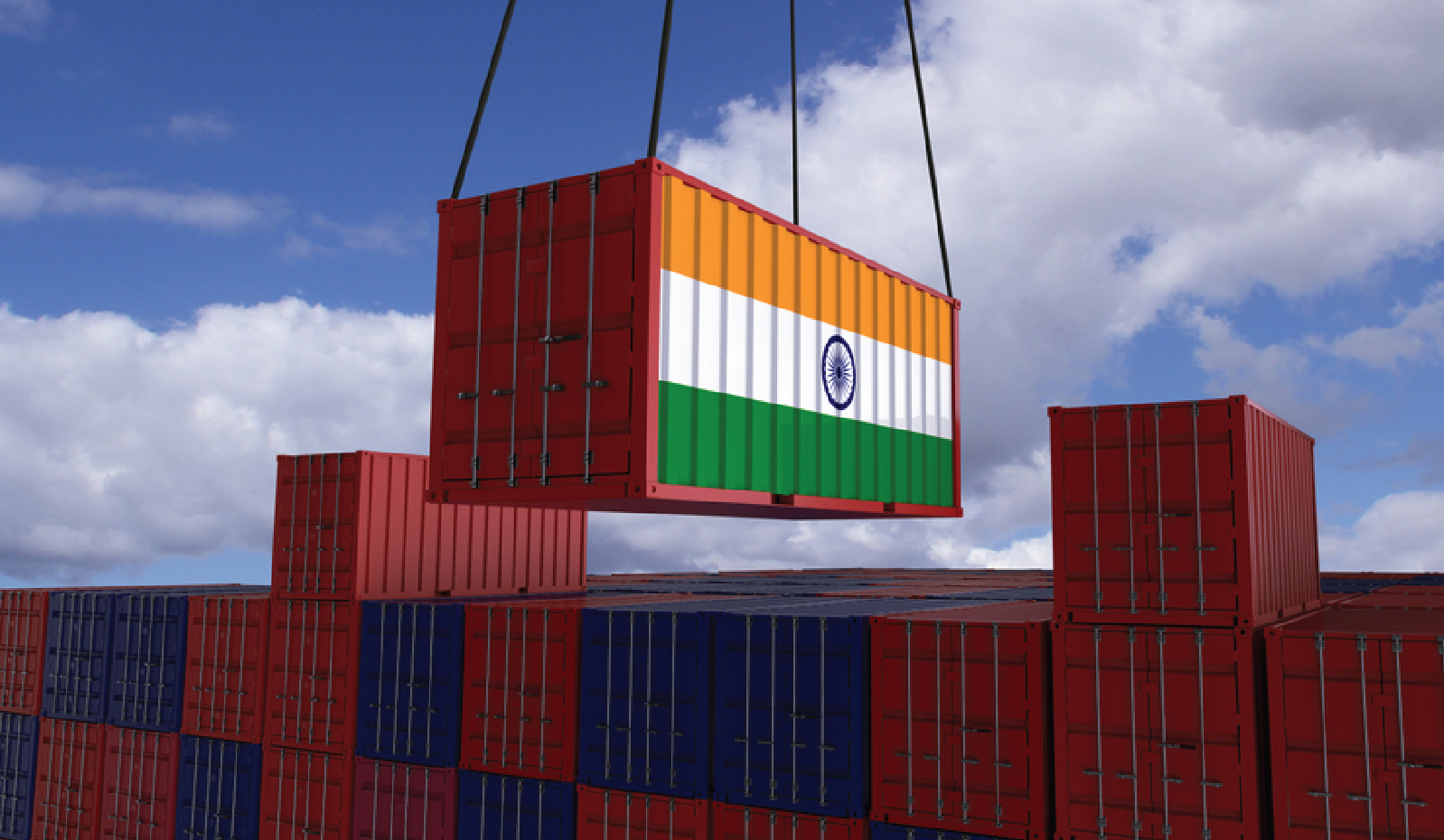Why in the News?
Union Ministry of Commerce and Industry commemorated third anniversary of the National Logistics Policy (NLP), 2022.

About National Logistics Policy (NLP), 2022
- Genesis: It was launched to complement the PM Gati Shakti National Master Plan (PMGS-NMP).
- Vision: To develop a technologically enabled, integrated, cost-efficient, resilient, sustainable and trusted logistics ecosystem for accelerated and inclusive growth.
- NLP addresses the soft infrastructure and logistics sector development aspect such as process reforms, improvement in logistics services, digitization, human resource development and skilling.
- While, PMGS-NMP addresses integrated development of the fixed infrastructure and network planning.
- Targets:
- Reduce cost of logistics in India to be comparable to global benchmarks by 2030.
- Improve the Logistics Performance Index ranking: Endeavour is to be among top 25 countries by 2030.
- Create data driven decision support mechanism for an efficient logistics ecosystem.
- Implementation through Comprehensive Logistics Action Plan (CLAP): It divided into 8 key action areas (See Infographic).
Key achievements under the National Logistics Policy (2022–2025)

- Logistics Ease Across Different States (LEADS) Index: Played a crucial role in promoting competitive federalism among states and supporting India's rise in the World Bank's Logistics Performance Index 2023.
- LEADS Index assesses logistics performance across States and UTs.
- LEADS 2025 introduces performance assessment of 5–7 key corridors (journey time, truck speed, waiting periods) and API-based evaluation of section-wise speeds on major road corridors.
- LEADS Index assesses logistics performance across States and UTs.
- Unified Logistics Interface Platform (ULIP): It has facilitated secure API integration across more than 30 digital systems, enabling over 160 crore digital transactions as of August 2025.
- ULIP is a digital platform that brings together data from various logistics-related ministries and departments on a single interface.
- Improved Digital Integration: Ease of Logistics Services (E-Logs) portal has onboarded 35+ logistics and industry associations, and has successfully resolved 100 out of 140 issues submitted by stakeholders.
- Logistics at regional level: 27 States and Union Territories have formulated State Logistics Policies, 19 States have granted industry status to logistics, enabling tax benefits and incentives.
Other initiatives to Improve Logistics Sector in India
- Grant of Infrastructure status: It has enabled access to cheaper, long-term funding, similar to roads and railways, further solidifying its significant role in the growth story of India.
- Integrated State and City Logistics Plans:Under the SMILE programme in collaboration with the Asian Development Bank (ADB).
- Strengthening Multimodal and Integrated Logistics Ecosystem (SMILE) Program aims to improve India's logistics infrastructure, reducing logistics costs, and increasing efficiency.
- Logistics Data Bank (LDB) 2.0: It enables enhanced real-time tracking of container movements, introducing export container tracking on high seas along with multi-modal shipment visibility.
- Others: Multi-modal Logistics Park under Bharatmala Pariyojana, Unified Logistics Interface Platform, Dedicated Freight Corridors, Gati Shakti Vishwavidyalaya, introduction of e-Way bills, etc.
Challenges still persist related to Logistics sector
- Modal imbalance: Railways and road transport's modal share of freight traffic is 18% and 71%, respectively. (NITI Aayog, 2021)
- Dominance of unorganized sector: Highly fragmented logistics industry with domination of several small and unorganized players (~90%). (KPMG, 2022)
- Digital literacy: Digital adoption among smaller logistics firms and independent operators remains uneven, especially outside urban centres.
- Regulatory complexity: Overlapping state and Union regulations, inconsistent implementation of GST for logistics, and varied licensing norms create operational uncertainties for both digital startups and established companies.
Way Forward
- Promote efficient modal mix: Expedition of the completion of Dedicated Freight Corridors (DFCs), promoting Inland Waterways, promoting RORO (Roll-On/Roll-Off) service, etc., can reduce logistics cost and improve efficiency.
- Adaptation to evolving formats: With the rise of e-Commerce, logistics and warehouse companies can strategise and manage their operations as per the evolving formats such as omnichannel retail, quick commerce and other models such as Buy Online, Pick up in store (BOPIS).
- Public-Private Partnerships:Collaborations between startups like Rivigo and small fleet operators to provide affordable, plug-and-play digital solutions.
- E.g., Rivigo's AI algorithms suggest optimal routes, reducing travel distance, fuel consumption, and delivery costs.
- Technological integration: Process-oriented automation systems that leverages scanners, barcodes, to streamline the data collection and integration process, on-demand warehousing through app-based tools, etc.
Conclusion
As India aspires to become a global manufacturing hub and achieve its sustainability goals, logistics will play the role in reducing costs, enhancing competitiveness, and fostering inclusive development. A forward-looking, innovation-driven and collaborative approach can turn India's logistics sector into not just a facilitator of commerce, but a strategic driver of national progress.





